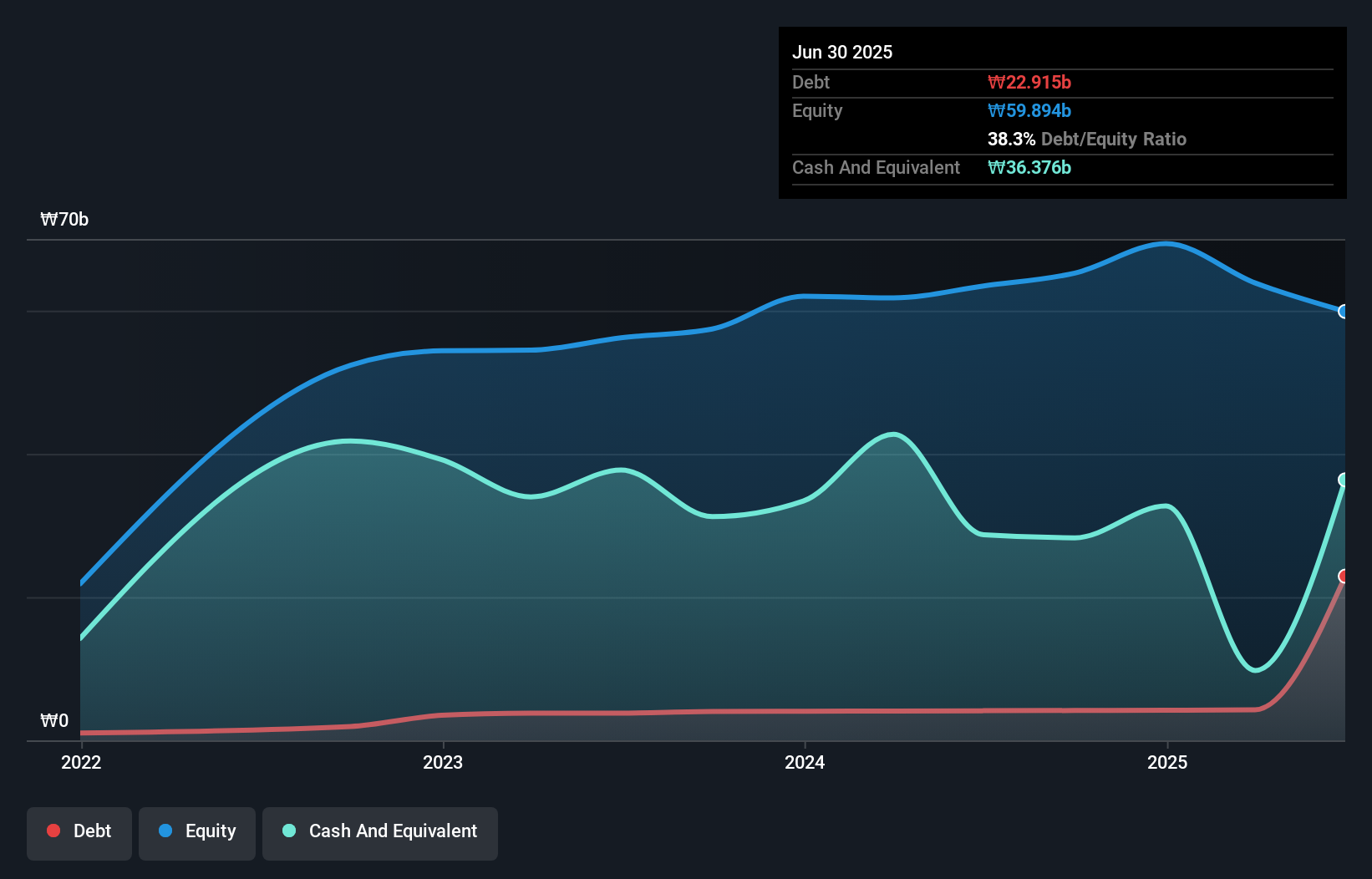Warren Buffett famously said, 'Volatility is far from synonymous with risk.' When we think about how risky a company is, we always like to look at its use of debt, since debt overload can lead to ruin. As with many other companies Gaonchips Co., Ltd. (KOSDAQ:399720) makes use of debt. But the real question is whether this debt is making the company risky.
When Is Debt Dangerous?
Debt is a tool to help businesses grow, but if a business is incapable of paying off its lenders, then it exists at their mercy. Ultimately, if the company can't fulfill its legal obligations to repay debt, shareholders could walk away with nothing. However, a more frequent (but still costly) occurrence is where a company must issue shares at bargain-basement prices, permanently diluting shareholders, just to shore up its balance sheet. Of course, debt can be an important tool in businesses, particularly capital heavy businesses. When we examine debt levels, we first consider both cash and debt levels, together.
What Is Gaonchips's Debt?
The image below, which you can click on for greater detail, shows that at June 2025 Gaonchips had debt of ₩22.9b, up from ₩4.13b in one year. However, its balance sheet shows it holds ₩36.4b in cash, so it actually has ₩13.5b net cash.

How Healthy Is Gaonchips' Balance Sheet?
The latest balance sheet data shows that Gaonchips had liabilities of ₩66.5b due within a year, and liabilities of ₩7.53b falling due after that. Offsetting this, it had ₩36.4b in cash and ₩6.71b in receivables that were due within 12 months. So its liabilities outweigh the sum of its cash and (near-term) receivables by ₩30.9b.
Given Gaonchips has a market capitalization of ₩653.1b, it's hard to believe these liabilities pose much threat. Having said that, it's clear that we should continue to monitor its balance sheet, lest it change for the worse. Despite its noteworthy liabilities, Gaonchips boasts net cash, so it's fair to say it does not have a heavy debt load! When analysing debt levels, the balance sheet is the obvious place to start. But you can't view debt in total isolation; since Gaonchips will need earnings to service that debt. So when considering debt, it's definitely worth looking at the earnings trend. Click here for an interactive snapshot.
See our latest analysis for Gaonchips
In the last year Gaonchips wasn't profitable at an EBIT level, but managed to grow its revenue by 2.4%, to ₩80b. That rate of growth is a bit slow for our taste, but it takes all types to make a world.
So How Risky Is Gaonchips?
Statistically speaking companies that lose money are riskier than those that make money. And we do note that Gaonchips had an earnings before interest and tax (EBIT) loss, over the last year. And over the same period it saw negative free cash outflow of ₩26b and booked a ₩3.3b accounting loss. With only ₩13.5b on the balance sheet, it would appear that its going to need to raise capital again soon. Overall, we'd say the stock is a bit risky, and we're usually very cautious until we see positive free cash flow. The balance sheet is clearly the area to focus on when you are analysing debt. However, not all investment risk resides within the balance sheet - far from it. For instance, we've identified 2 warning signs for Gaonchips (1 is a bit concerning) you should be aware of.
At the end of the day, it's often better to focus on companies that are free from net debt. You can access our special list of such companies (all with a track record of profit growth). It's free.
New: Manage All Your Stock Portfolios in One Place
We've created the ultimate portfolio companion for stock investors, and it's free.
• Connect an unlimited number of Portfolios and see your total in one currency
• Be alerted to new Warning Signs or Risks via email or mobile
• Track the Fair Value of your stocks
Have feedback on this article? Concerned about the content? Get in touch with us directly. Alternatively, email editorial-team (at) simplywallst.com.
This article by Simply Wall St is general in nature. We provide commentary based on historical data and analyst forecasts only using an unbiased methodology and our articles are not intended to be financial advice. It does not constitute a recommendation to buy or sell any stock, and does not take account of your objectives, or your financial situation. We aim to bring you long-term focused analysis driven by fundamental data. Note that our analysis may not factor in the latest price-sensitive company announcements or qualitative material. Simply Wall St has no position in any stocks mentioned.
About KOSDAQ:A399720
Mediocre balance sheet with very low risk.
Market Insights
Community Narratives




